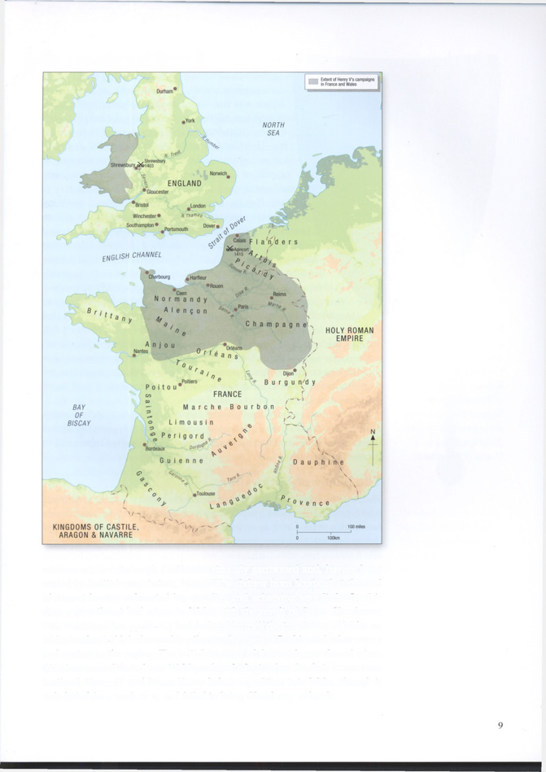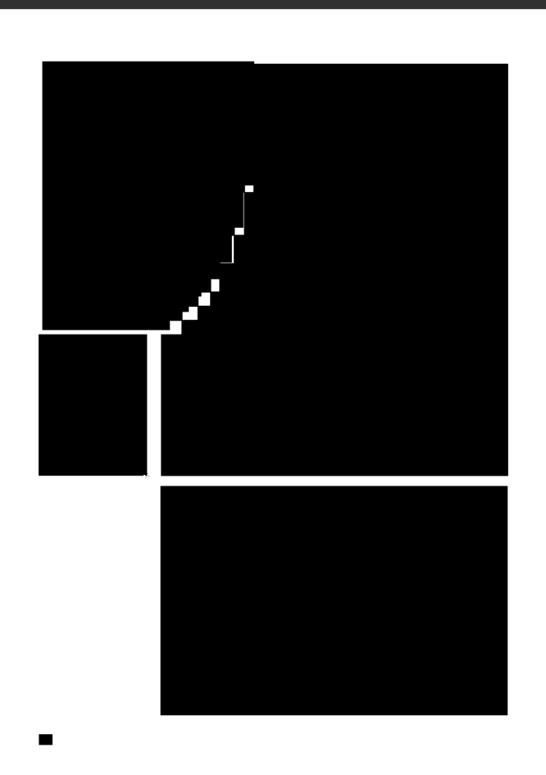Henry V: The Background, Strategies, Tactics and Battlefield Experiences of the Greatest Commanders of History Paperback (4 page)
Authors: Marcus Cowper
Tags: #Military History - Medieval

The first parliament of Henry IV's reign in 1399 had seen incursions by the
Scots into northern England - no doubt taking advantage of the absence of
the Earls of Northumberland and Westmorland, who were at Westminster
- while Robert III of Scotland refused to recognize Henry IV's assumption of
the throne, as did Charles VI of France. Henry therefore announced on
10 November 1399 his intention to lead an army against the Scots in the
first military operation of his reign. His eldest son would go with him.
The expedition set off in May 1400 and would prove to be the future Henry
V's first military experience. A large army of over 13,000 men was assembled
and the army crossed the border into Scotland on 14 August. The expedition
proved to be inconclusive, as Robert III withdrew in the face of the English


The campaigns of Henry V
advance while Edinburgh Castle was strongly garrisoned and, having been
misled by Scottish negotiators, Henry IV withdrew from Scotland at the end
of August having exhausted his supplies and achieving very little. By this
stage a new threat had arisen in Wales with the revolt of Owen Glendower.
This Welsh lord (see pp.49-50) had declared himself the true Prince of Wales on
16 September 1400, before sacking the nearby town of Ruthin and other towns
and centres in the region. The initial impetus of the revolt was slowed when
Glendower was defeated near Welshpool on 24 September. On their return from
Scotland, Henry IV and Prince Henry led an expedition into Wales, though it
only lasted for a week or so and failed to bring Glendower to battle.


Prince Henry was left at Chester to deal with the
problem in his own principality; owing to his youth
he was given a council to assist him, at the head of
which was the son of the Earl of Northumberland,
Henry Hotspur. The revolt stretched on into 1401, with
Conwy Castle falling to a
coup de main
in that year,
though it was rapidly back in English hands. Henry IV
led an expedition to southern Wales in October in
support of his son. This short campaign, lasting only
two weeks, took in Llandovery and the monastery at
Strata Florida, but again failed to achieve anything
substantial, and Glendower felt bold enough to launch
an assault on Caernarvon Castle shortly afterwards and
attack Welshpool once more. In April 1402 Glendower
managed to capture Lord Grey of Ruthin, while on 22 June he
defeated an army led by Sir Edmund Mortimer at the battle
of Bryn Glas, capturing him and killing some 1,100 of his men.
This success, followed up by Glendower's assaults on the towns of
Abergavenny, Caerleon, Usk, Newport and Cardiff in southern Wales led
This shield is part of the
to Henry IV undertaking another punitive expedition in September 1402,
military equipment
dividing his large force - chroniclers claim some 100,000 men, though this
associated with the tomb
is an extreme exaggeration - into three columns, with the northernmost one
of Henry V. It is made of
commanded by Prince Henry. However, this two-week campaign was the
limewood and has an arm
most unsuccessful one so far, achieving almost nothing in the face of Welsh
pad of crimson velvet.
withdrawals and terrible weather conditions.
Scraps of the original blue
In March 1403 Henry formally became the king's lieutenant of the marches
silk brocade are still visible.
in Wales based in Shrewsbury, taking absolute command of operations against
(Copyright Dean and
Glendower for the first time, but it was not to be in Wales that he was to face
Chapter of Westminster)
his first major battle.
The battle of Shrewsbury
The powerful Percy family of northern England - holders of many of the royal
positions along the border - had become increasingly estranged from the new
Lancastrian regime ever since their support had helped Henry IV win the
throne in 1399. Now they decide to take matters into their own hands and
allied themselves with Glendower, whose prisoner (and Henry Hotspur's
brother-in-law) Sir Edmund Mortimer had married his daughter and gone over
to his side. They sought to overthrow the Lancastrian rule and replace Henry
IV with the young Earl of March, Mortimer and Hotspur's nephew, who in
many ways had a superior claim to the throne of England than Henry IV
(see the family tree on p.5).
The rebels' plan was that Hotspur, along with his uncle the Earl of Worcester,
would march from Chester to Shrewsbury both to meet up with Glendower's
forces moving northwards and to capture Prince Henry who was based there.
At the same time his father, the Earl of Northumberland, would gather another
force in the north.
10


Henry IV, who was already travelling northwards, had certainly found out
i
about the conspiracy by 12 July and, assembling what men he could,
he marched for Shrewsbury on 17 July, arriving there before Hotspur and
linking up with his 16-year-old son.
Henry Hotspur arrived with his force on the 20th and, as Glendower and
Northumberland were both delayed, found himself caught between the
fortified town of Shrewsbury and the bulk of the royal forces. He withdrew
3 miles (5km) to the north-west to the village of Berwick and prepared to
give battle.
The two armies appear to have been roughly of an equal size, though the
exact numbers involved are unknown. Anything from as low as 5,000 men to
the figure of 14,000 given in the
Annales Henrici Quarti
seems plausible - though
contemporary chroniclers again give widely varying totals of anything up to
80,000. The forces on both sides consisted of a mixture of men-at-arms and
archers, with a detachment of Cheshire archers on the Percy side proving to be
particularly influential in the course of the battle.
Hotspur had drawn his men up in a line of battle on a low hill in Berwick
Field at the top of a field of peas. Henry IV split his army into two main
divisions, described as follows by the French chronicler Jean de Waurin:
The king... made his dispositions of vanguard, main body, and rear guard,
of whom he delivered the command to those whom he thought proper and
worthy to undertake it. He in person led the main body, the Duke of York,
his uncle, being with him, and the young Duke of Gloucester, the Earl of Arundel,
the Earl of Rutland, and many other great lords. In the vanguard were the Earl of
Warwick, the Earl of Exeter, the Earl of Somerset, the Lord de Ros, and many
other great barons, and in the rear guard were the young Duke of Surrey and
many wise and distinguished knights, and when they were all assembled they
numbered fully twenty-six thousand archers and three thousand men-at-arms,
but at last there were more than sixty thousand men.
Prince Henry commanded a third force to the flank of the main army. There
then followed a period of negotiations between the two sides, during which The sword of Henry V
the Percys rejected extremely good terms from Henry IV. The battle itself started from Westminster Abbey.
in the afternoon with the advance of the Royal vanguard under Edmund, Earl This arming sword was
of Stafford, who had just been appointed constable of England by Henry. His found in the Triforium of force advanced uphill into the face of the Percys' force of Cheshire archers and Westminster Abbey in 1869
took heavy casualties. The
Chronica Maiora
of Thomas Walsingham describes it and, although located as follows: Therefore the archers of Henry Percy began the fight and the place separately, is believed for the missiles was not on the ground... for men fell on the king's side as fast to be one of the funeral as leaves fall in autumn after the hoar-frost. Nor did the king's archers fail to do 'achievements' of Henry V.